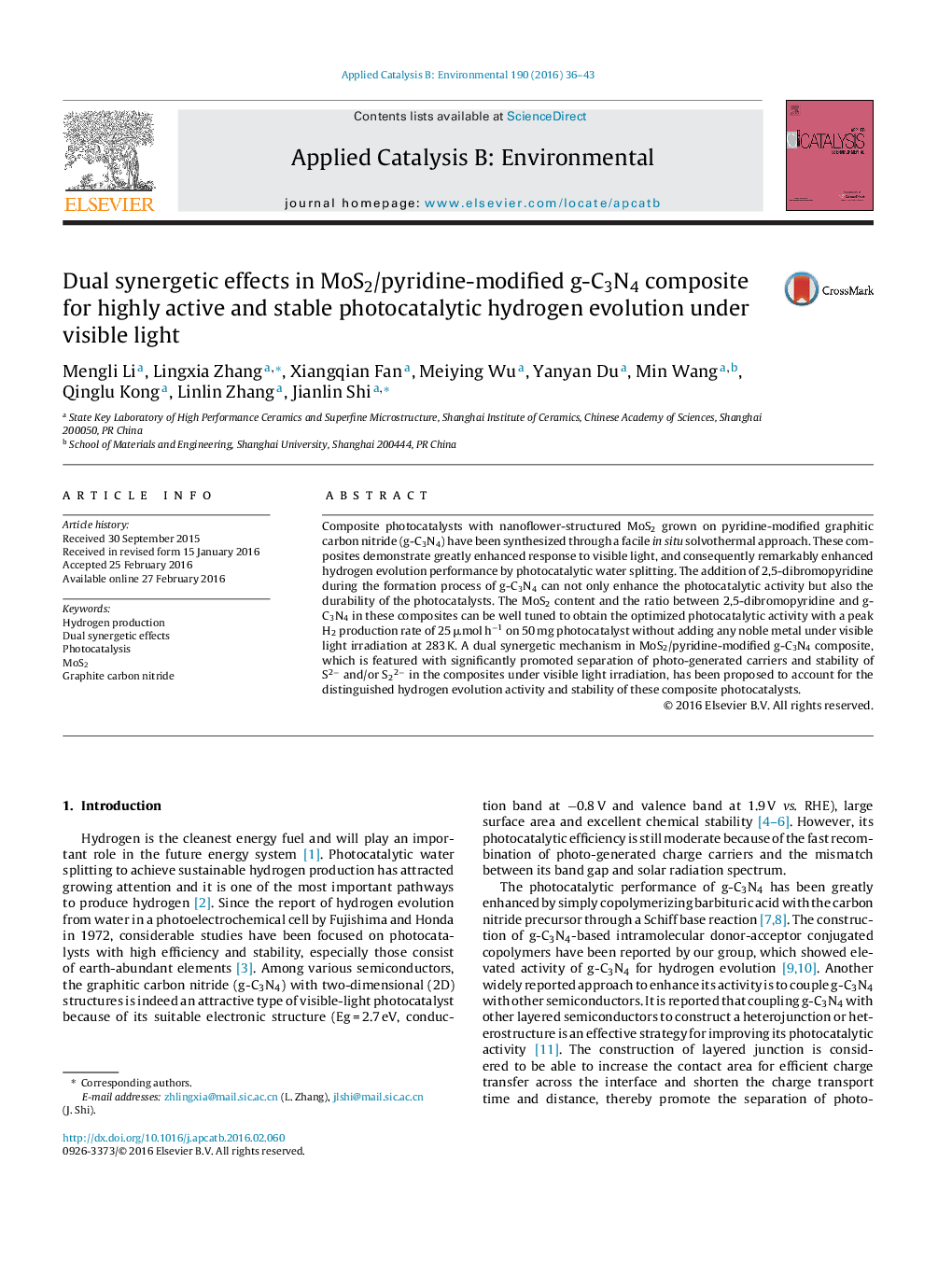| کد مقاله | کد نشریه | سال انتشار | مقاله انگلیسی | نسخه تمام متن |
|---|---|---|---|---|
| 44924 | 46380 | 2016 | 8 صفحه PDF | دانلود رایگان |

• Pyridine doped g-C3N4 (CN-Py) was synthesized by simple thermal copolymerization.
• A series of MoS2/CN-Py with high stability was synthesized by hydrothermal method.
• These catalysts showed remarkably enhanced photocatalytic H2 evolution performance.
• Other sulfides such as WS2 with high stability can also be fabricated by this approach.
• A dual synergetic photocatalysis mechanism on MoS2/CN-Py has been proposed.
Composite photocatalysts with nanoflower-structured MoS2 grown on pyridine-modified graphitic carbon nitride (g-C3N4) have been synthesized through a facile in situ solvothermal approach. These composites demonstrate greatly enhanced response to visible light, and consequently remarkably enhanced hydrogen evolution performance by photocatalytic water splitting. The addition of 2,5-dibromopyridine during the formation process of g-C3N4 can not only enhance the photocatalytic activity but also the durability of the photocatalysts. The MoS2 content and the ratio between 2,5-dibromopyridine and g-C3N4 in these composites can be well tuned to obtain the optimized photocatalytic activity with a peak H2 production rate of 25 μmol h−1 on 50 mg photocatalyst without adding any noble metal under visible light irradiation at 283 K. A dual synergetic mechanism in MoS2/pyridine-modified g-C3N4 composite, which is featured with significantly promoted separation of photo-generated carriers and stability of S2− and/or S22− in the composites under visible light irradiation, has been proposed to account for the distinguished hydrogen evolution activity and stability of these composite photocatalysts.
Figure optionsDownload as PowerPoint slide
Journal: Applied Catalysis B: Environmental - Volume 190, 5 August 2016, Pages 36–43